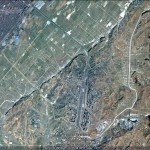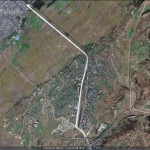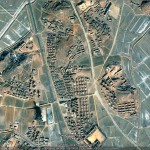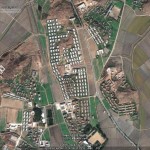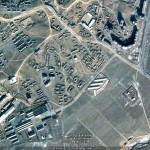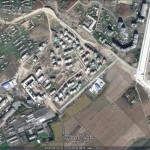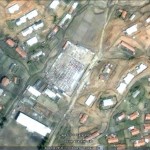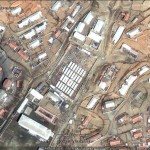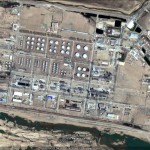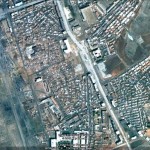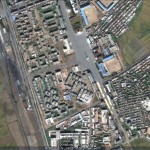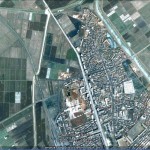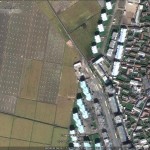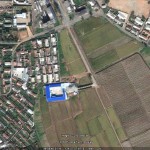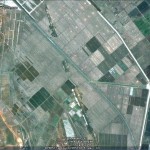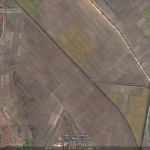UPDATE 3 (9/6/2010): The DPRK has announced the release of the fishing crew. According to Reuters:
North Korea said on Monday it was releasing the seven-man crew of a South Korean fishing boat, including three Chinese, after they illegally entered its waters last month.
State news agency KCNA said the crew would be sent back South Korea “taking into consideration the fact that they admitted the seriousness of their act and gave assurances that they would never repeat such an act”.
Tensions have mounted on the peninsula this year after the sinking of a South Korean warship — Seoul says it was sunk by a North Korean torpedo — and a series of recent military drills by the United States and South Korea.
UPDATE 2 (8/18/2010): The DPRK has acknowledged that it has the ship and crew. According to Bloomberg:
North Korea confirmed it seized a South Korean fishing boat last week off the communist country’s east coast for violation of the maritime border.
North Korea is investigating the four South Korean and three Chinese crew members, who had “confessed that they intruded into the economic waters,” the state-run Korean Central News Agency reported. The North Korean navy captured the boat on Aug. 8 at around 10:15 a.m. local time, the report said.
South Korea has sent a message to North Korea, urging a swift return of the 41-ton Daeseung and its crew. The incident came amid heightened tensions between the two countries after the South accused the North of torpedoing one of its warships in March, killing 46 sailors.
North Korea fired a barrage of artillery shells into the water off its west coast on Aug. 9 after repeated threats of “retaliation” against South Korea’s joint naval drills with the U.S. The U.S. and the South held anti-submarine exercises off the Asian country’s east coast last month and plan to hold more in the coming months.
UPDATE 1 (8/11/2010): According to Yonhap:
South Korea said Wednesday it sent North Korea a message urging the prompt release of the crew of a South Korean fishing boat the communist state seized three days ago amid high military tensions.
North Korea accepted the message delivered through a western military hotline between the two countries at 10 a.m., Unification Ministry spokeswoman Lee Jong-joo said in a briefing.
The message, addressed to the North’s top Red Cross official, contains a call by his South Korean counterpart to free the seven crew members of the Daeseung “promptly in line with international law and customs and on humanitarian grounds,” Lee said.
South Korea is investigating whether the 41-ton boat, which had left for a joint fishing area off the east coast of the Korean Peninsula on Aug. 1, trespassed into the North’s exclusive economic zone. Pyongyang has yet to offer any word on the state of the crew that included four South Koreans and three Chinese.
“We have also asked the North to explain in detail how the fishing boat was seized,” Lee said, adding the Red Cross channel is often used in inter-Korean issues involving civilian boats.
The seizure came amid high tensions between the two Koreas in the wake of the deadly March sinking of a South Korean warship near their western sea border. On Monday, North Korea fired more than 100 rounds of artillery along the Yellow Sea border near the area where South Korea had just ended five-day-long naval drills.
A government source said South Korea and China have been discussing the issue.
“An official at the South Korean embassy in China met with a Chinese government official a few times recently” to discuss the seizure and share information, the source said on condition of anonymity. “The seized crew include Chinese … If negotiations for their release begin in the future, we plan to cooperate with China where necessary.”
In July of last year, a South Korean fishing boat, the Yeonan, accidentally crossed into North Korea’s waters and was towed to a nearby port. The boat was released about a month later.
And according to Reuters:
Chinese diplomats in North Korea were trying to check the reports, said China’s official Xinhua news agency.
“If the report is confirmed, the DPRK should treat the Chinese crew members well with humanitarianism, guarantee their rights and interests, and inform the Chinese side of their conditions, the (Chinese) officials said,” according to Xinhua.
ORIGINAL POST: Surprisingly not anywhere near the NLL…
According to the New York Times:
North Korea seized a South Korean fishing boat in waters near their eastern sea border, the South Korean Coast Guard said Sunday, straining already high tensions between the two Koreas.
The 41-ton squidding boat was believed to have been detained after entering the North’s exclusive economic zone, where foreign fishing boats are banned, the coast guard said in a statement.
Four South Koreans and three Chinese crew members were on board. South Korea’s national news agency, Yonhap, quoting an unnamed coast guard official, said that the ship was being towed to Songjin, a port on the eastern coast of North Korea, for interrogation of the crew.
“Our government hopes for the safe return of our ship and crew according to international laws,” the coast guard’s statement said.
…
The South Korean squid ship left Pohang, a port on the east coast of South Korea, on Aug. 1 and was scheduled to return to port on Sept. 10. It made its last daily radio report to the South Korean Coast Guard on Saturday evening.
UPDATE via the Washington Post:
According to one report in the South Korean media, the boat was operating in a maritime area shared by North Korea and Russia, about 160 miles off the North Korean coast.
Additional thoughts
1. Well it is probably a good thing there was a Chinese crew aboard the ship as this will make it difficult for the DPRK to claim the fishing vessel was attempting espionage. If Chinese fishermen can protect South Korean ships from DPRK espionage accusations we might be able to predict that an escalation in tensions between North and South Korea will result in increased employment of Chinese fishermen in the ROK….Chinese fishermen index?
2. Songjin is known in North Korea as Kimchaek. See a satellite image of it here.

